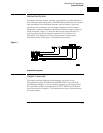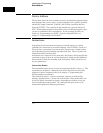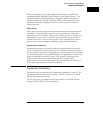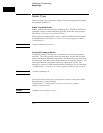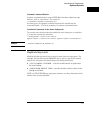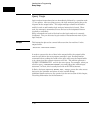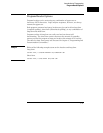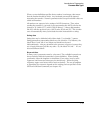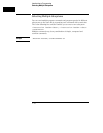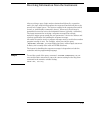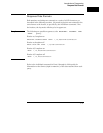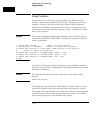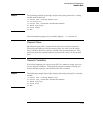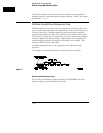
When a syntax definition specifies that a number is an integer, that means
that the number should be whole. Any fractional part would be ignored,
truncating the number. Numeric parameters that accept fractional values are
called real numbers.
All numbers are expected to be strings of ASCII characters. Thus, when
sending the number 9, you send a byte representing the ASCII code for the
character "9" (which is 57, or 0011 1001 in binary). A three-digit number,
like 102, will take up three bytes (ASCII codes 49, 48 and 50). This is taken
care of automatically when you include the entire instruction in a string.
String data
String data may be delimited with either single (’) or double (") quotes.
String parameters representing labels are case-sensitive. For instance, the
labels "Bus A" and "bus a" are unique and should not be used
indiscriminately. Also pay attention to the presence of spaces, because they
act as legal characters just like any other. So, the labels "In" and " In" are
also two different labels.
Keyword data
In many cases a parameter must be a keyword. The available keywords are
always included with the instruction’s syntax definition. When sending
commands, either the longform or shortform (if one exists) may be used.
Uppercase and lowercase letters may be mixed freely. When receiving
responses, upper-case letters will be used exclusively. The use of longform
or shortform in a response depends on the setting you last specified via the
SYSTem:LONGform command (see chapter 10).
Introduction to Programming
Parameter Data Types
1–13



